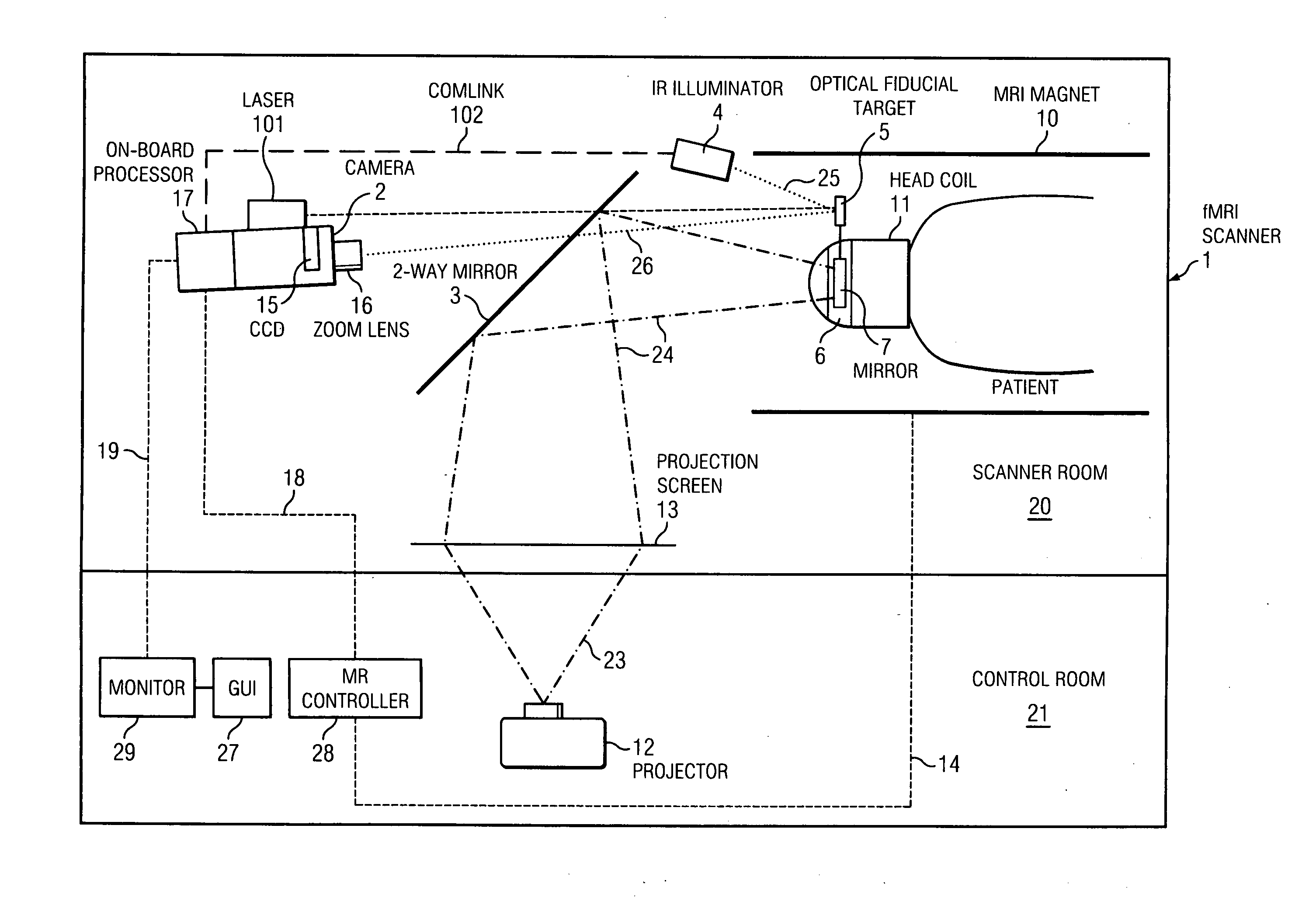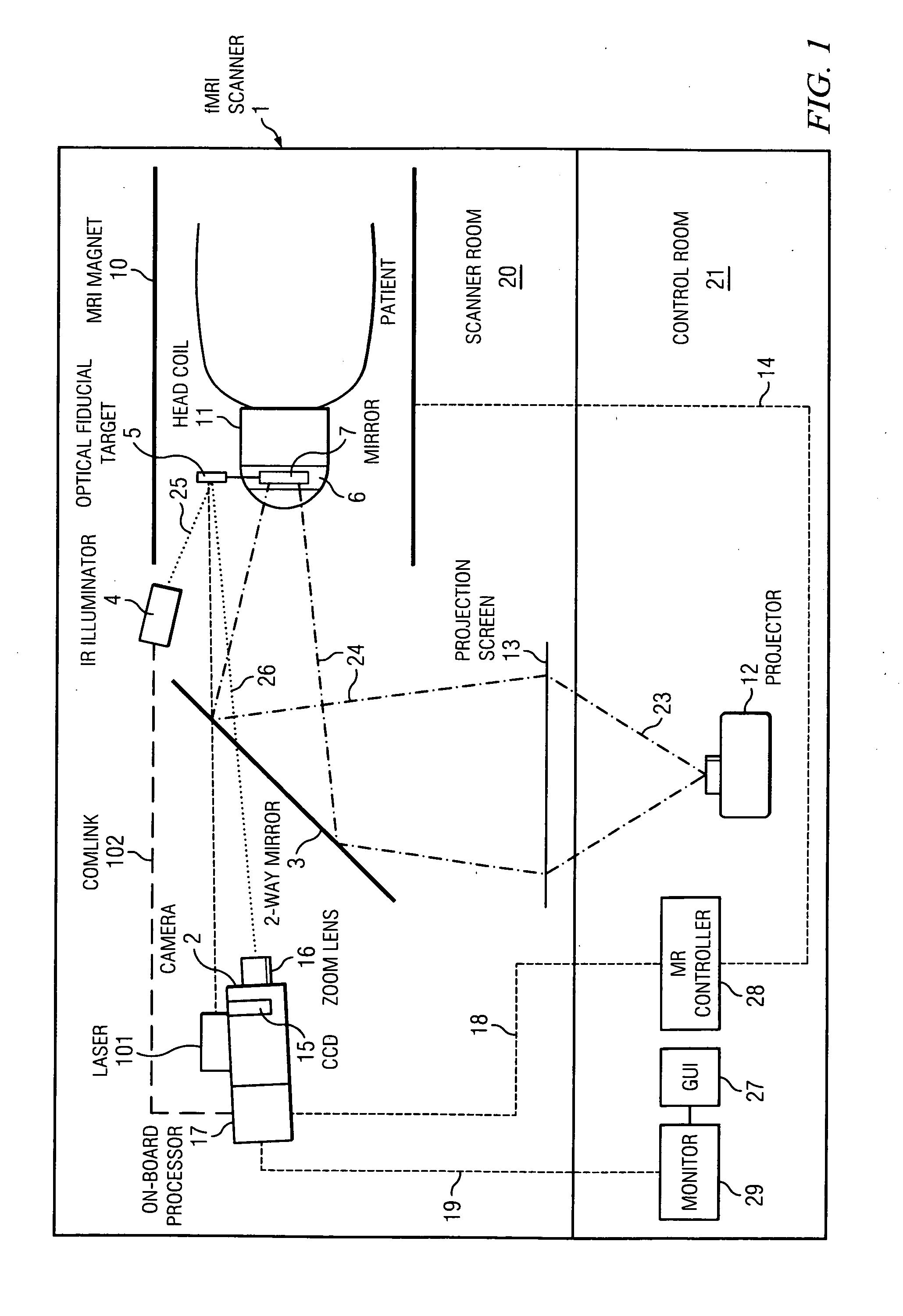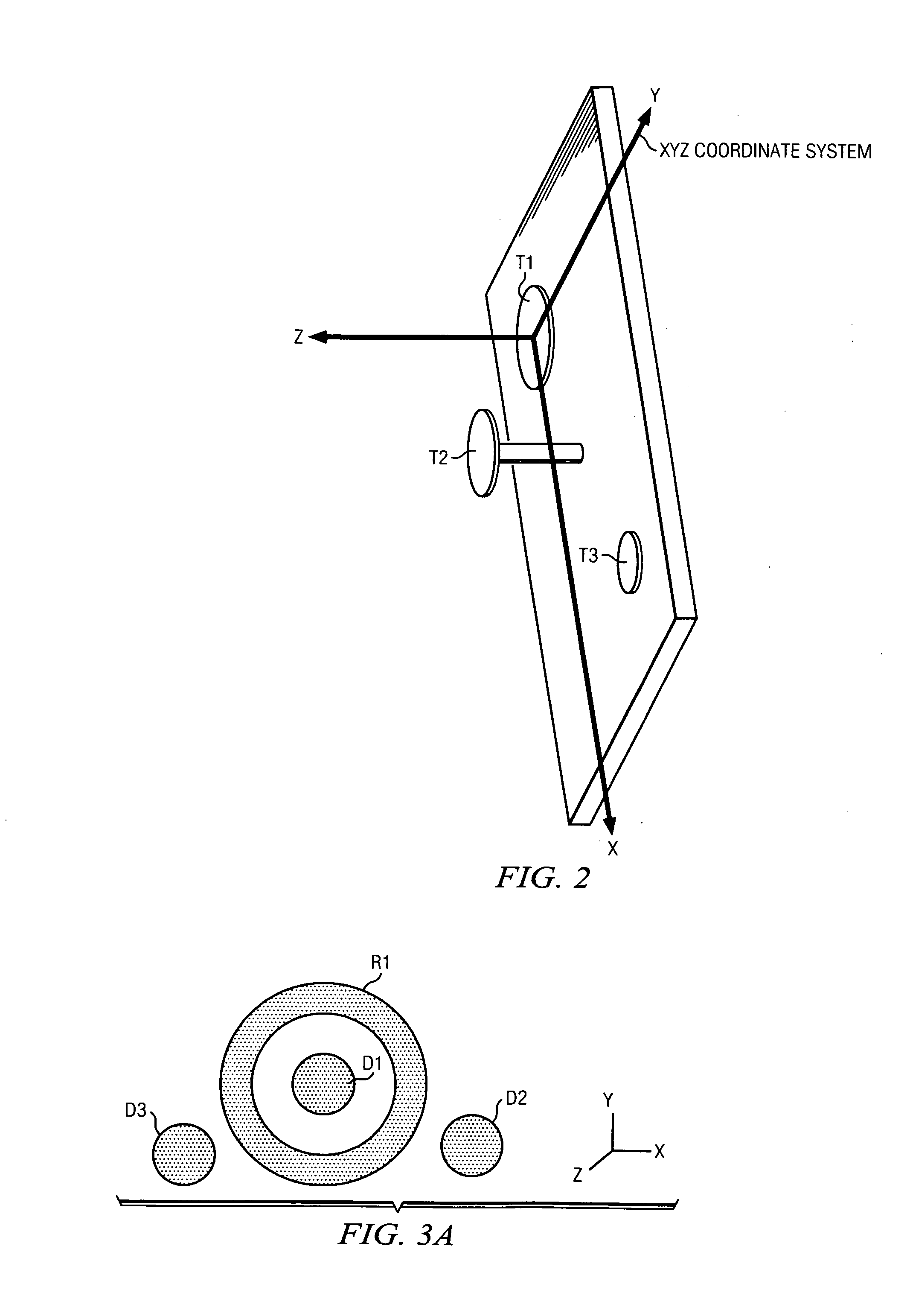Single camera motion measurement and monitoring for magnetic resonance applications
a single camera and magnetic resonance technology, applied in the field of magnetic resonance imaging measurement and monitoring, can solve the problems of poor imaging, image artifacts, and difficult detection of moving biological tissue, and achieve the effect of improving imaging time and accuracy
- Summary
- Abstract
- Description
- Claims
- Application Information
AI Technical Summary
Benefits of technology
Problems solved by technology
Method used
Image
Examples
first embodiment
[0070]the motion measurement system includes a motion alarm. The motion measurement system detects patient movement in real time and provides immediate feedback to the scanner operator who may then take immediate corrective action such as termination of the scan early, settling the patient and performing a rescan. The immediate feedback is in realized in a first form as a motion alarm alerting scanner operator of patient movement in excess of a pre-defined adjustable threshold. The immediate feedback is realized in a second form as a trend graph of patient movement.
[0071]FIG. 4 shows a screen shot of the graphical display of GUI 27 configured for a motion alarm. GUI 27 comprises selector 33 for displaying a trend graph of patient motion, selector 32 for calibrating the thresholds for alarming, alarm indicator 34 in combination with an audio alarm to alert the MRI personnel, communications link indicator 35 for indicating quality of communications between camera 2 and motion monitor ...
second embodiment
[0074]the motion measurement system is a motion tracking and correction system. The motion correction system detects patient movement in real time and provides real-time motion data to the MRI controller which takes immediate corrective action by adjusting the MRI images according to the motion data.
[0075]FIG. 6 shows a flow chart diagram of a second embodiment method 160 of tracking and correcting motion of a patient during an MRI image scan. At step 161, a time series of images of the optical fiducial target is continuously collected from the camera during the MR image scan. At step 162, the on-board processor of the camera tracks the motion of the image centroid for six degrees of freedom (6-DOF) for the time series of images. At step 163, the data for the 6-DOF is sent to the controller. If tracking capability is enabled in the controller at step 164, then at step 165, MRI images collected during the MR image scan are adjusted according to the patient motion characterized by the...
PUM
 Login to View More
Login to View More Abstract
Description
Claims
Application Information
 Login to View More
Login to View More - R&D
- Intellectual Property
- Life Sciences
- Materials
- Tech Scout
- Unparalleled Data Quality
- Higher Quality Content
- 60% Fewer Hallucinations
Browse by: Latest US Patents, China's latest patents, Technical Efficacy Thesaurus, Application Domain, Technology Topic, Popular Technical Reports.
© 2025 PatSnap. All rights reserved.Legal|Privacy policy|Modern Slavery Act Transparency Statement|Sitemap|About US| Contact US: help@patsnap.com



